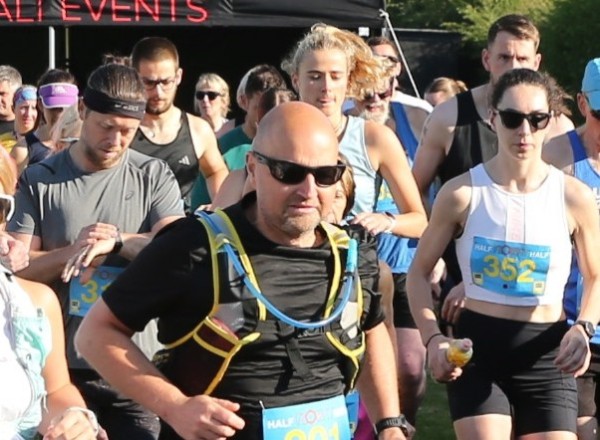Stretch It Out
Stretching is often overlooked when considering an exercise programme but should be a fundamental part of your exercise routine. However, stretching incorrectly either results in an ineffective stretch or the potential for injury. So here are a number of points to consider when stretching.
FLEXIBILITY AND STRETCHING
Flexibility describes the range of motion for a given joint. This is influenced by muscles and connective tissue like tendons (connecting muscle to bone) and ligaments (connecting bone to bone). Stretching describes the form of exercise that helps you either maintain your current flexibility or improve it.
HOW FLEXIBLE SHOULD YOU BE?
Flexibility requirements are relative to the sport or activity you are involved in, or the movement involved in your daily routine. But flexibility in moderation is key here. A lack of flexibility is linked to injuries, chronic (long term) pain and poor posture. Conversely too much flexibility can lead to joint instability and ultimately dislocation.
ARE THERE DIFFERENT TYPES OF STRETCH?
Stretches mainly come in three forms, static, dynamic and ballistic. We’ll cover each of them in more detail below but generally the static stretching is best performed at the end of an exercise session, whereas dynamic and ballistic stretches are best performed as part of your warm up. For the keen exercisers out there you might have heard of PNF stretching (Proprioceptive Neuromuscular Facilitation, but this is an advanced form of static stretching that is best overseen by a professional)
STATIC STRETCHING
Static stretching, as the name implies, involves slowly stretching a muscle to near it’s end position and holding for a short period of time, normally 10-30 seconds (so little movement involved). This shouldn’t be painful.
Static stretching can be further categorised whereby passive stretching: using another object/person to facilitate your stretch and active stretching: using your other muscles to elicit a stretch.
Most of the recent research suggests that static stretching right before playing a sport of performing exercise can impair performance. It’s not that static stretching is bad, in fact it can be the safest and most effective form but it simply shouldn’t be done as part of a warm up. So static stretching is best performed after finishing exercise or as the main part of exercise after warming up (yoga, pliates etc).
DYNAMIC MOVEMENT/STRETCHING
Dynamic stretching involves gently encouraging muscles to comfortably go to their end of range using momentum. So, swinging your legs back and forth, and bending at the knee when swinging back, for example is a great way to warm up and stretch your quadriceps, hip flexors and hamstrings.
BALLISTIC STRETCHING
Ballistic stretching follows similar principles to dynamic stretching but the principle here is to encourage the muscles to go beyond their natural comfortable range. This is great for activities that require ballistic movement such as kicking a football or performing martial arts but has a much higher potential for injury so is best left to the experienced to perform
STRETCHING APPROPRIATE TO THE ACTIVITY
As a simple guide and one that I use with clients, try and stretch dynamically using movements similar to the activity you are about to do. So if you are doing heavy chest press then perform these movements initially with no weight, and with full range of motion. Then introduce more weight (resistance) with each set until you reach your training weight. As a runner, warm up with some gentle jogging but include high knee raises, bum kicks, sideways leg crossovers etc.
Most importantly everyone is different and so are their flexibility and stretching needs so don’t compare yourself to anyone else. If you have injuries or medical conditions, then it would be wise to seek help from a fitness professional.
Food for thought: a scientific meta-analysis by a physiotherapy forum found that conducting resistance training with proper form and proper range of motion had the same results, if not better, than stretching alone, but with the added benefit that comes from improving ones strength.
Have fun and stretch it out.
More Articles

Storm the Castle Duathlon: Conquering the Run Course
On Sunday, 18th May, the battle lines will be drawn as athletes take on the Storm the Castle Duathlon—a race that demands power, strategy, and a fair bit of grit! Whether…

The Ludlow Half Marathon: A Stunning Multi-Terrain Challenge in the Heart of Shropshire
After a fantastic debut last year, the Ludlow Half Marathon is back as part of the Ludlow10 event, taking place on Sunday 13th July 2025.

Join the Journey: Discover the Thrill of the Midsummer Mortimer Trail
The Midsummer Mortimer Trail offers a unique and relaxed race experience, combining physical challenge with the beauty of the countryside.

Mastering Transitions: How to Nail the Duathlon at Storm the Castle on May 18th
Transition is often the secret weapon that can either make or break your performance in a duathlon, and the upcoming Storm the Castle event on May 18th offers the perfect…
